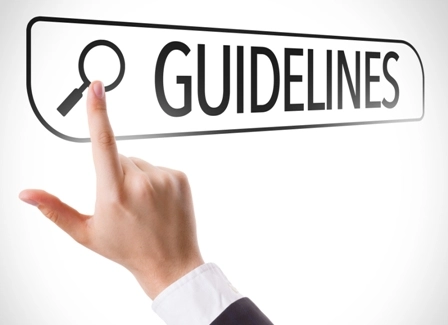Neurosurgery Coding Alert
Hit Documentation Hotspots to Nail Each Claim
E/M level very often affected by what’s in the notes. Comprehensive documentation is key to establishing and maintaining accurate medical records for patients, as well as ensuring timely and accurate payment for providers. Payers and auditors look to providers’ notes for the details to support medical necessity, accurate and appropriate evaluation and management (E/M) service levels, and other aspects of care. If your provider’s documentation doesn’t have enough information for you to do your job as a coder, it’s your responsibility to query them. Use these helpful guidelines for reviewing patient records and respectfully reaching out to clinicians. Know CMS Guidelines The Centers for Medicare & Medicaid Services (CMS) stresses that a valid claim must have sufficient documentation to verify services performed were “reasonable and necessary,” and “supports the level of service” billed. In other words, if documentation is missing or insufficient, then there is no proof the reported codes accurately represent the encounter. Furthermore, if the documentation does not support paid claims, reimbursement may be considered an overpayment, and CMS could recoup the funds if an audit included such services. CMS dictates medical record notes should meet the following criteria: 1. Notes are complete and legible. 2. Notes include: o Reason for the encounter, relevant history, findings, diagnostic test results and date of service; o Assessment, clinical impression or diagnosis; o Plan of care; and o Date and legible identity of the observer. 3. If not documented, the rationale for ordering diagnostic and other ancillary services should be easily inferred. 4. Past and present diagnoses are accessible to the treating and/ or consulting provider. 5. Appropriate health risk factors are identified. 6. The patient’s progress, response to and changes in treatment, and revision of diagnosis are documented. 7. The treatment and diagnosis codes, (as well as the level of care) reported are supported by the documentation. Consult CPT® E/M Guidelines While CPT® makes it clear that its E/M guidelines don’t establish the documentation requirements or standards of care, it does remind coders of the main purpose of documentation. Proper documentation is meant to “support the care of the patient by current and future health care teams,” according to the E/M Guidelines. H&P is still important: It’s a common misconception that since history and physical exam haven’t directly contributed to code selection since 2020, there is no reason to spend time documenting the history and examination. But exams and history are very much still part of the E/M services, and therefore, must be documented. The E/M code descriptors tell you the service must include a “medically appropriate history and/or physical examination, when performed,” according to the guidelines. Remember the purpose of a complete medical record is to provide thorough information for current and future healthcare teams. Ask These Questions When Analyzing Record The quality of the provider’s documentation allows coders to not only code with accuracy, but also to the highest specificity. It’s important the provider get credit for all the work done. “When I’m analyzing a record, I like to use the acronym M.E.A.T., which stands for Monitor/Manage, Evaluate, Assess/ Address, and Treat,” explains Keisha Wilson, CCS, CPC, SPMA, CRC, CPB, AAPC Approved Instructor, at KW Advanced Consulting LLC in New York City. It’s crucial to look at the patient record and see whether all of those elements have been addressed in the documentation. Ask yourself questions such as the following: “If a provider keeps the term M.E.A.T. in mind, they will often have all the needed information for the coder to code the encounter without many queries,” Wilson says. Know When to Query Whenever there is inconsistent, missing, unclear, or illegible documentation, query the provider immediately. To avoid unnecessary queries or incomplete queries that create more questions, read over the record carefully and look for gaps in the documentation relating to the following: Coding alert: When cross-referencing codes, remember to look out for Use Additional notes. If additional information is required to report a code, that may be something you’ll need to include in your query. Know How to Query There are fundamentally three types of queries. A coder can decide which of the following types of queries to use depending on the situation: 1. Y/N query: The query is written so that the only answer can be “yes” or “no,” and it does not prompt another question. 2. Multiple-choice query: This question includes clinically significant and reasonable options as supported by clinical indicators in the record — understand though, at times, there may be only one reasonable option. 3. Open-ended query: This query allows a written response. Use when there are clinical indicators in the notes for a diagnosis, but a diagnosis is not noted. Always use a consistent, compliant format, no matter which type of query is used. Additionally, state the facts simply and avoid making questions overly wordy. “Keep queries short and sweet and almost emotionless in tone. Don’t lead your providers to an answer either, as that won’t stand up in an audit,” Kelly Shew, RHIA, CPC, CPCO, CDEO, CPB, CPMA, CPPM, CRC, Risk Adjustment Education Specialist at Olympia Medical in Livonia, Michigan. Also, remember to document your queries and the provider’s response in the patient’s record in case anyone needs to reference the file later. EMRs: Your practice may have query templates built into the electronic medical record (EMR) that can help you manage and maintain queries. If it looks like these templates have not been activated, reach out to the vendor. If an electronic query management system is not available, you can always create a standard text document to use and store queries. For more information on queries, check out the AAPC blog: www.aapc.com/blog/85344-take-your-provider-queries-to-the-next-level/

Related Articles
Neurosurgery Coding Alert
- Surgery:
Learn to Count to Code Vertebroplasty/Vertebral Augmentation
The number of vertebrae treated will affect code choice. Patients reporting to your surgeon for [...] - E/M Coding:
Experts Evaluate 2023 Inpatient/Hospital Codes
Getting used to new E/M guidelines is challenging. Unless you haven’t coded anything in 2023, [...] - Compliance:
Hit Documentation Hotspots to Nail Each Claim
E/M level very often affected by what’s in the notes. Comprehensive documentation is key to [...] - You Be the Coder:
Bone Flap Craniotomy With Chemo Agent
Question: The surgeon performs a supratentorial bone flap craniotomy for excision of a brain tumor. [...] - Reader Questions:
Approach Matters on Tumor Excision
Question: How should I report excision of a pituitary tumor? AAPC Forum Subscriber Answer: It [...] - Reader Questions:
Remember Code First Notes for Neuro Disorder
Question: The surgeon treats a patient with mild neurocognitive disorder due to Parkinson’s disease. Is [...] - Reader Questions:
Drill Down Into Details for Dementia Dx
Question: A patient who suffers from mild vascular dementia has exhibited some aggressive physical behaviors: [...]




